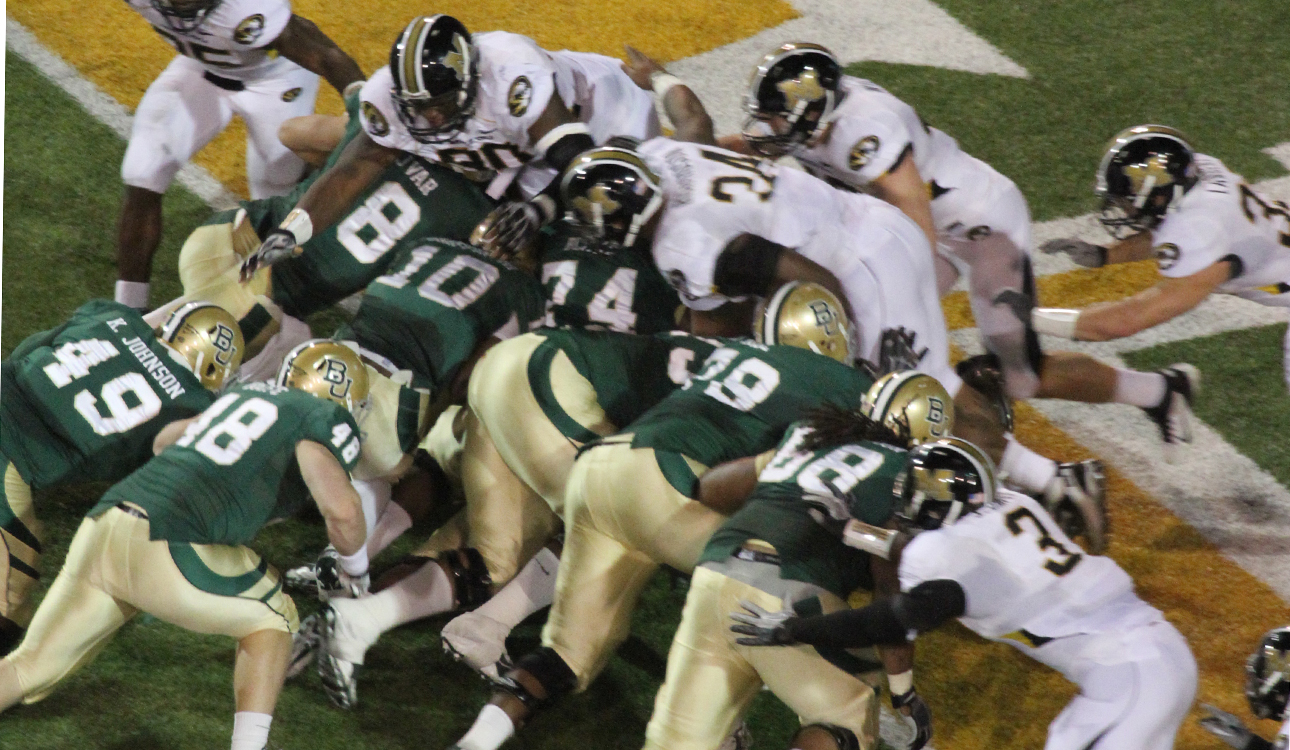

Matt Hellman | Lariat Photo Editor
By Krista Pirtle
Sports Writer
When a football team’s offense lines up inside the 20-yard line, its chances of scoring greatly increase; for the Baylor Bears, however, this aspect of the game has given them problems.
In all eight games thus far, the Bears have scored 26 times out of 38 opportunities in the red zone.
Only three of those 26 have been field goals.
This 68 percent looks decent on paper, but on the field, finishing opportunities is key to winning.
Offensively, Baylor leads the nation in pass efficiency, ranks second in total offense (577.13 yards per game) and first downs (29).
The offense is one of two to rank in the top 20 nationally in rushing (200) and passing (300).
On 48 scoring drives this season, Baylor has scored in less than two minutes on 24 of them, including 12 that ended in less than 60 seconds.
This powerful offense is led by Heisman-candidate junior quarterback Robert Griffin III, who has thrown for 2,781 yards and 26 touchdowns with a completion percentage of 74.
Once the team gets in the red zone, the Bears do not seem so dominant.
What many people see as a struggle, head coach Art Briles sees as an opportunity.
“Struggle?” Briles said. “I’m not buying into that after the game Saturday. I think we’re as diverse as anybody around. So I think that gives us opportunities down in that part of the field. We get down there, we’re expecting to score touchdowns, I’ll tell you that.”
Fans may think the red zone provides an easy scoring opportunity, but that’s not the case.
Instead of having to defend the entire field, the defense gains an unseen advantage by only having to protect 20 yards of turf.
“Everything’s smaller,” senior running back Terrance Ganaway said. “You’re not playing with a huge field, the defense, the safety’s no longer at 10 yards, they’re at four or five yards. Everybody’s creeping in. They’ve got the guys in the backfield trying to make a big play, trying to make a big stop. You’ve just got to execute; no turnovers, no penalties in the red zone.”
During the Bears’ off week two weeks ago, red zone offense was a major focus of practices.
“Basically, we worked out Tuesday, Wednesday and Thursday and brought them back (Sunday),” Briles said. “Our emphasis from an offensive standpoint was red zone. Just looking at it from a schematic standpoint to personnel and seeing how the percentages laid out schematically and how the personnel did — whether they were in position to make plays or whether the scheme kept them from being there.”
After a solid week of focus on the red zone, the Bears went 3-6 within the 20-yard line with two touchdowns and a field goal in the game against Oklahoma State on Oct. 29. The three failed drives include an interception, a fumble and a failed fourth-and-1 try.
“Sickening comes to mind because you know how important it is to punch it in in that situation,” Briles said. “It’s not like you are going to pitch a shutout game against them but you certainly better match scores when you have opportunities and we didn’t.”
That was enough motivation for the offense to really get to work to finish drives and rack up numbers on the scoreboard.
“Coming into the game, we knew our red zone offense was not as good at A&M and Oklahoma State, so as a group we decided we needed to step it up as offensive linemen and get the ball in there,” senior center Philip Blake said.
With the progression seen last week against Missouri, the team looks to keep improving throughout the rest of the season.
“[We’ve got to] keep getting down there,” Briles said. “Keep getting opportunities is the main thing we need to do.”





